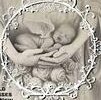How to Plan a Child Funeral
A child funeral is an opportunity for a family to say their last farewells in the presence of loved ones who share the same grief as they do. Many parents find that this is a very comforting way to say goodbye to their baby or child, especially when they are not sure they are ready for a full funeral service. A child funeral can also be a chance for children to say goodbye to their sibling who has died, whether they are still living or have passed away. This is a very difficult thing for some children to understand and can cause anxiety. The best approach is to break down what will happen at the service so your child can decide if it is something they want to be part of or not. It is important to give a child the option of attending or not, but to also help them understand what will happen at the funeral and what it might look like. Some children can be scared by what they might see when they are buried, so it is a good idea to offer them a choice of what they would prefer to be buried in. This could be a Moses basket, bassinet, doll bed, or perhaps a wagon padded with blankets for an older child. It is also helpful to offer a clear and honest explanation of what they will be seeing, encourage questions, and repeatedly reassure them that their sibling cannot feel cold or pain or fear and that their sibling can still be a part of the family. Most families choose to have a short ceremony in their home, at the funeral home or other place of worship before the burial. During the service, there might be music geared toward children or a story about your child that is shared by friends and family members. You can also request that a member of the clergy or other person who knows your child be present to help reassure and talk with them throughout the service. When it is time to go to the graveside, it might be helpful for a friend or family member who knows your child to be their “funeral buddy” during this part of the ceremony. They can play with your child during this time and help them through the different rituals. After the graveside service, your child may want to scatter flower petals or sprinkle glitter over their grave. You can ask the funeral home or other people to be first and provide a container for these items for your child. Other children might write a message to their sibling and have it placed in (or on) the casket or urn, or write a letter or poem and have it read on their behalf. Having a balloon release, lighting unity candles or using luminaries can also be very meaningful to children. Many families will also keep a small urn at their home to hold some of the cremains of their child, or even their favorite teddy.
